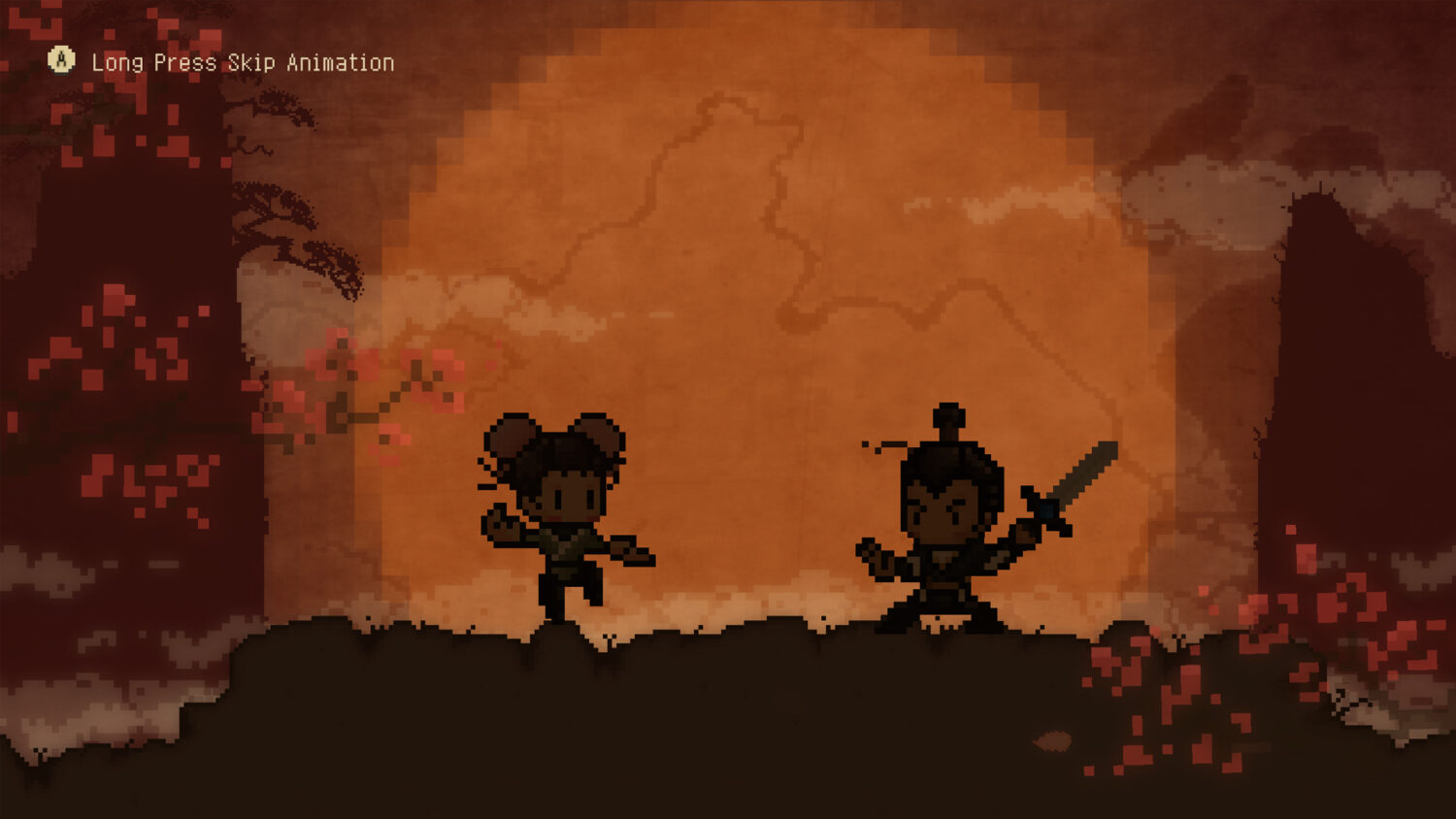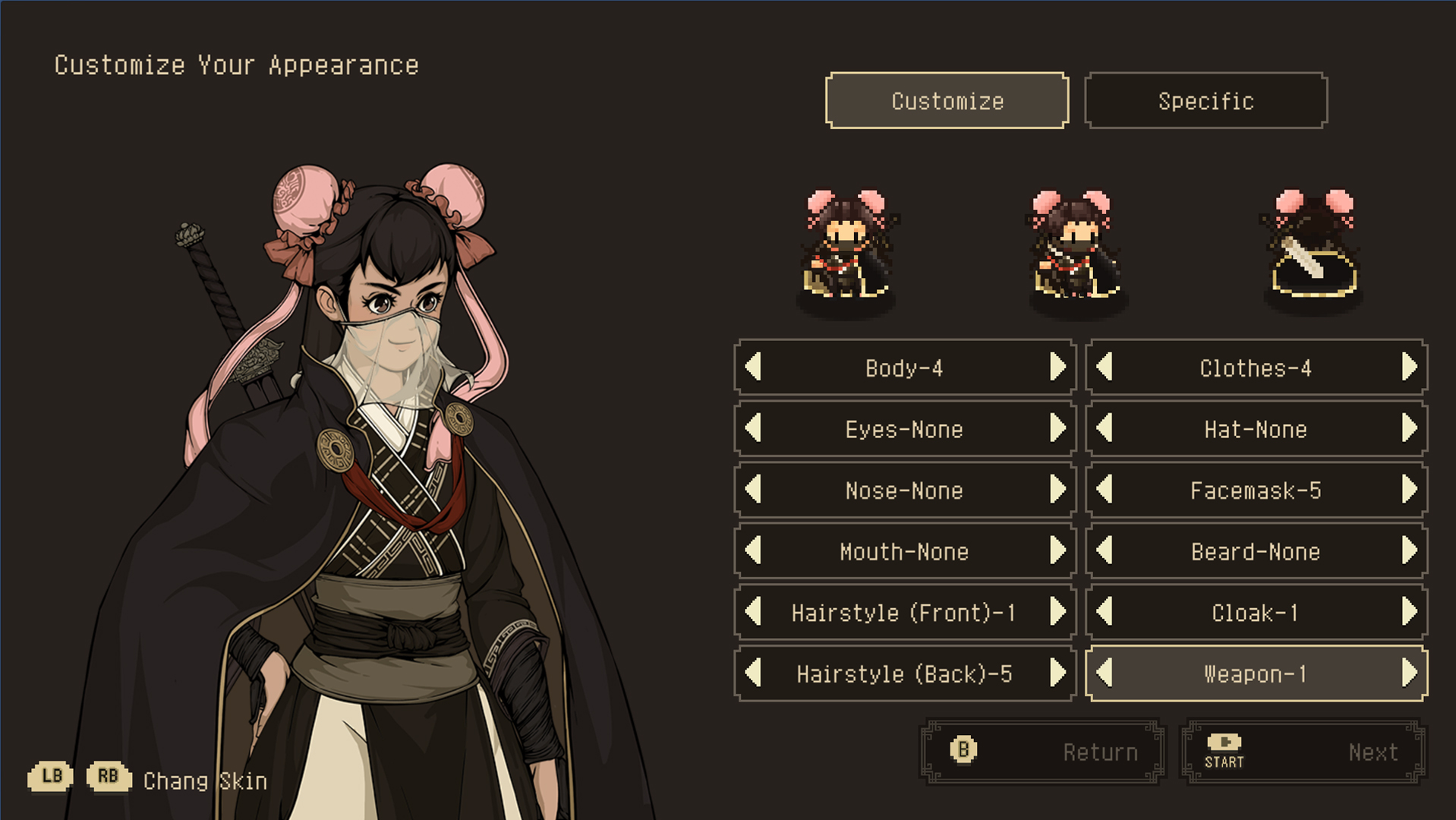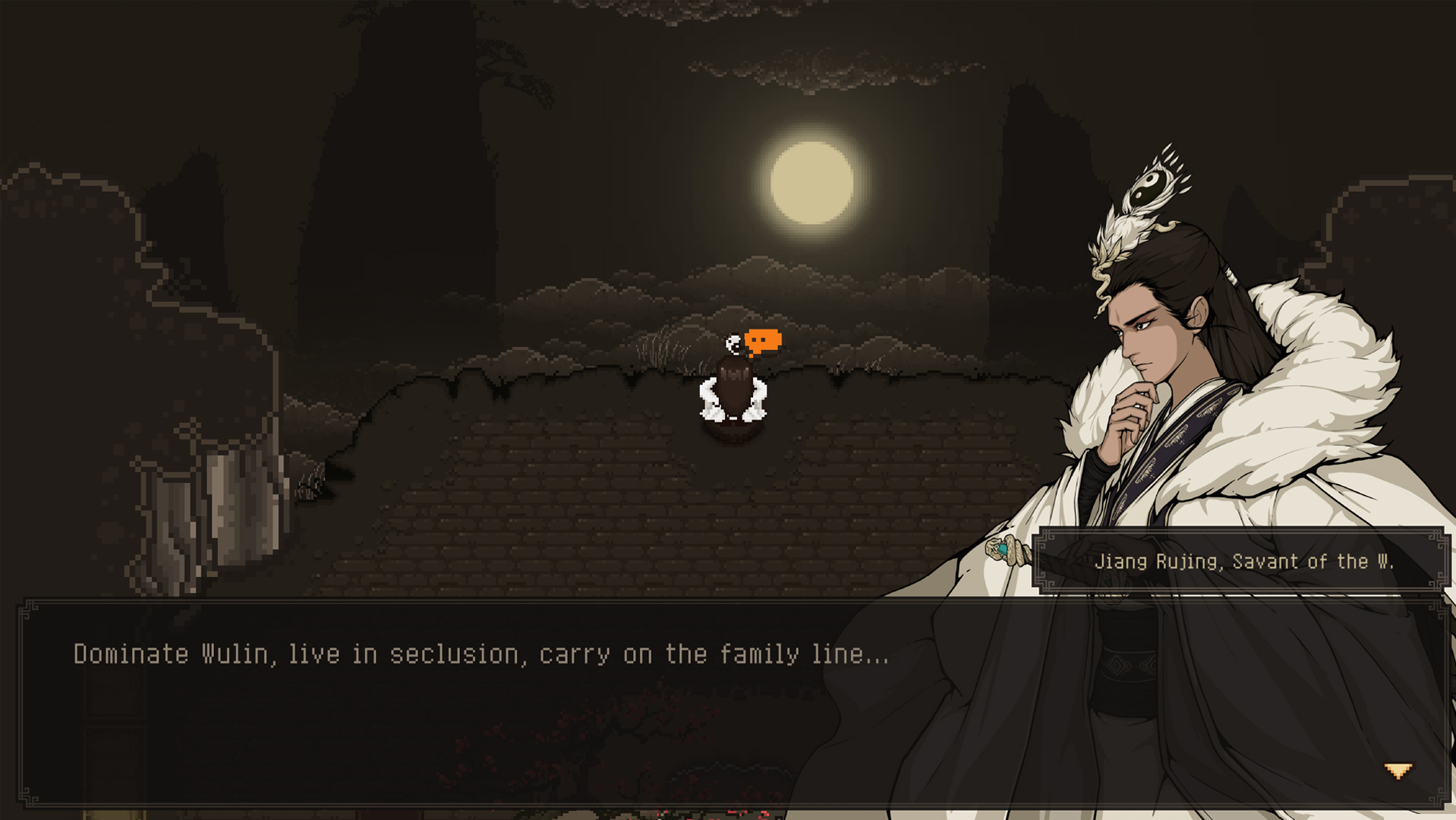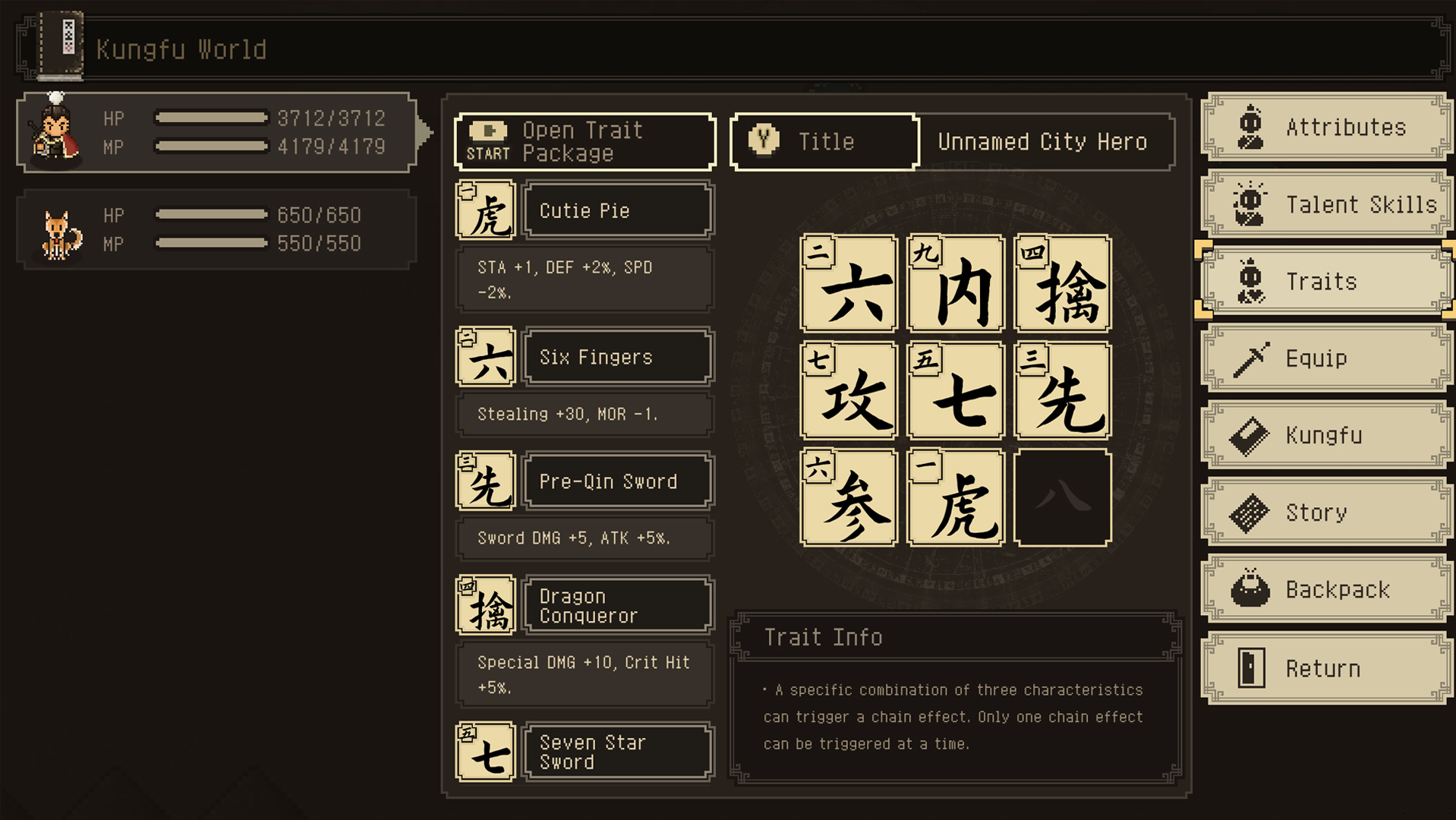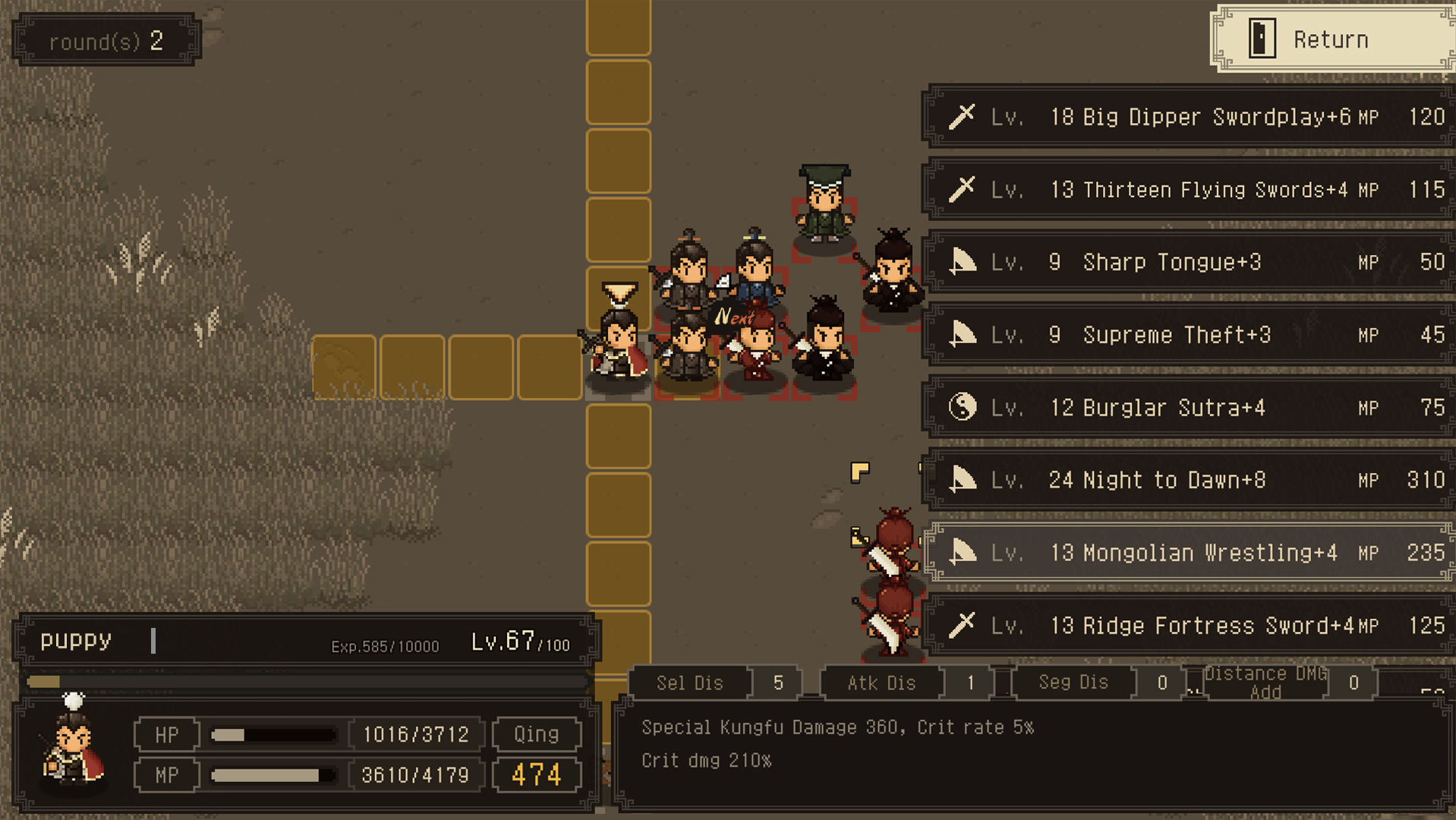Your Kung Fu is Wuxia
I’ve played so many turn-based RPGs over the years that many have amalgamated in my memory. That’s not a knock on them, of course; it happens with movies, restaurants, and people, too. If humans really use only 1/10th of our brains, I can’t be spending that small amount on the names of nephews and nieces.
World of Kungfu: Dragon and Eagle will likely not meet that fate. The gameplay and visuals on display here are likely to remain comfortably in my memory for quite some time. Sorry…uh…Brett’s kid; your name has to go.
Unlike most tactical/strategy RPGs, you get to select your character’s gender and customize the appearance.
The options are robust, but that’s not the cool part. The cool part is that you also get to select your character’s origins, which also determine the type of kung fu you’ll be using. It’s not a whole lot different from choosing a class in your standard RPG, I suppose, but it feels so much more honorable.
Body type? Hairstyle? Beard or hat? Who cares? What matters is whether I’m a poor young beggar with the chance to learn a divine kungfu, a young snake breeder from Western Xia with a T2 staff art, or the abandoned, adopted son of a Jin Nobleman with a T2 special kungfu. There are six options available when you first play, with more that open in a new game +. As such, The World of Kungfu: Dragon and Eagle is primed for multiple playthroughs. A little more guidance at the start would’ve been helpful, though; it’s not like I had any idea what a T2 staff art was. But the game is very much set up for you to actually learn the kungfu you’ve selected, weapons and all.
Regardless of your character selections, you’re dropped into vassal state China in 1151 AD. Gangs are running the streets, and it’s up to you to determine how to move through them. Do you ally with any of the various sects or should you play the political game? Do you take the honorable approach or break laws for your own gain?
Your decisions affect the story, of course, but also directly determine which characters are willing to join you. Choose to spare an enemy, and that person may join you. But that also adjusts your morality level which, in turn, affects how other potential team members view you. Your decisions weigh heavily, and with over 100 possible characters to recruit, you’ll be making those decisions often. Again, count on multiple playthroughs if you want to get everything out of the game.
The turn-based combat really is based on customization. You can use a kungfu skill or inventory item, you can meditate, but selecting from those options is not how you win. You do so by knowing which party members to bring into the fight (up to five), by having acquired and built up the right skills (the more you use a skill, the better you become at it), by assigning the traits you’ve picked up (for triggering various bonuses), and so on. It became apparent early on that winning battles was more about having the proper team setup than about carefully navigating the battlefield grids.
That’s fine, except that there’s little explanation of how it all comes together. For the first dozen or so hours, I really felt like I was fighting blind. Towards the end, I still never thought I had my party as well-optimized as I could have. It’s never a good sign when auto-battle is more efficient than manual controls. Thankfully, you can pick up right before a battle when you lose one. You can also save your favorite party lineups so you don’t have to rebuild each time you want to go in with a different group.
The World of Kungfu: Dragon and Eagle gives you much more to do than simply fight your way through China. In addition to going on quests and collecting bounties, you can speak with townsfolk to solve riddles and even help them compose couplets for various rewards. There’s a nice balance between combat and culture.
All of this is presented with decent throwback graphics and audio. The gameplay visuals are a bit more rudimentary than we’ve seen as of late, mostly lacking in color and detail. The portrait artwork is top notch, however, and ties in nicely with the character models. The soundtrack, I must point out, is everything I love about retro games. Check out the trailer and you’ll hear what I mean.
None of this to say is that The World of Kungfu: Dragon and Eagle is a game for everyone. It plays so differently from its counterparts that it can be off-putting, especially considering the lack of gameplay and story guidance.
There were multiple times where it seemed the game was not progressing at all, only for it to suddenly push forward because of some event I unknowingly triggered somehow. I also never go fully into the main story arc, but was entertained enough by simply wandering the land and taking on smaller tasks. I also found it enjoyable to build up my team even if I never had a clear idea of what I was ultimately going to do with them.
I mentioned earlier that the game is set up for multiple playthroughs. I’m not sure how many players will be that eager to jump right back in after reaching its approximately 50-hour time-to-completion. But even if you just work through it once, The World of Kungfu: Dragon and Eagle is an adventure you’ll remember.
Review: World of Kungfu: Dragon and Eagle (Nintendo Switch)
Good
The turn-based RPG The World of Kungfu: Dragon and Eagle is in equal parts clever and frustrating. The unique approach to combat, team building, and customization is fun and perfectly set up for multiple playthroughs. Story progression is often aimless, however, and the gameplay idiosyncracies could be better explained.

